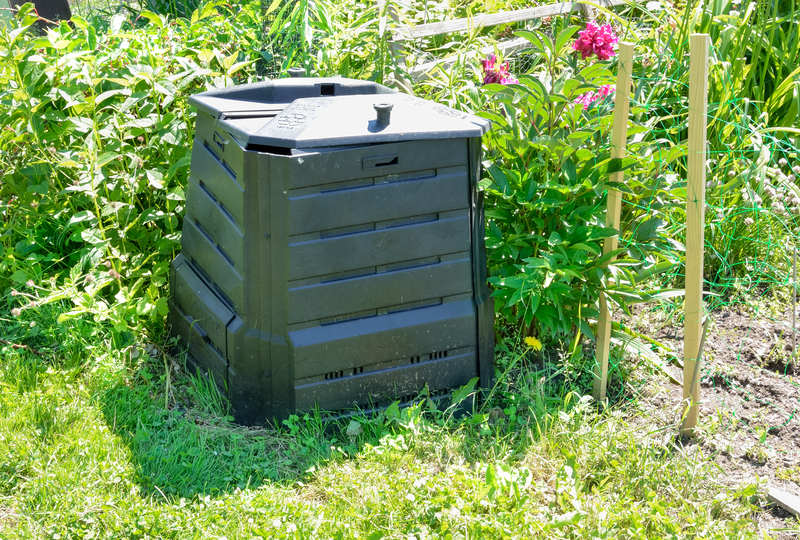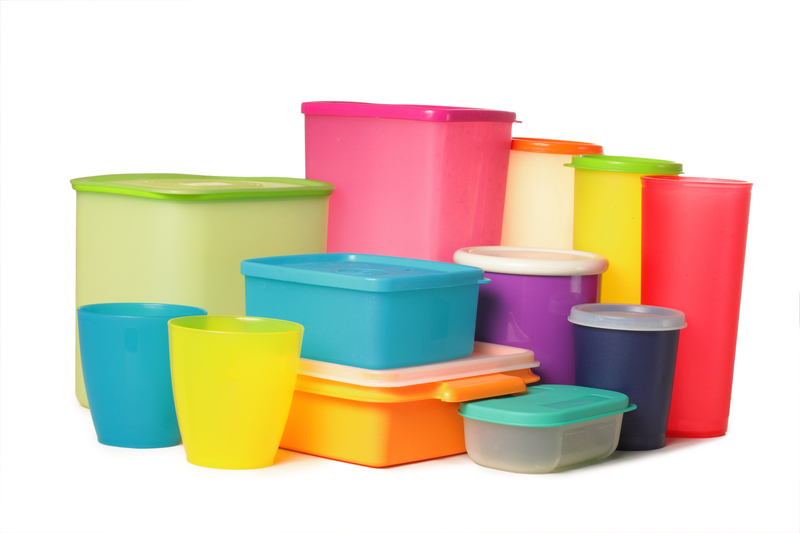Harnessing Recycling for Your Old Cookware: A Sustainable Solution
What happens to your teetering pans, battered pots, and warped baking sheets when their cooking days are over? Rather than sending them to landfill, recycling old cookware offers an eco-friendly and often lucrative alternative. In this comprehensive guide, we'll examine all aspects of cookware recycling, from materials identification to drop-off locations, creative upcycling, and the environmental benefits. Give your aged kitchen gear a responsible send-off!

Why Should You Recycle Old Cookware?
Americans discard millions of tons of old housewares each year. Pots, pans, and other kitchen cookware items often end up cluttering landfills where they may take centuries to decompose--or not break down at all. Here's why it's essential to harness recycling for cookware:
- Conserves natural resources: Many cookware items are made from metals like aluminum and stainless steel, which are both 100% recyclable.
- Reduces landfill waste: Reusing and recycling keeps heavy, non-biodegradable materials out of landfills.
- Supports circular economy: Recycled materials become new products, sustaining manufacturing without further depleting resources.
- Lowers environmental impact: Mining and producing metals are energy- and pollution-intensive. Recycling significantly lessens these hazards.
- Potential for cash return: Many scrap yards buy recyclable metals, meaning you can turn old cookware into cash.
What Types of Cookware Can Be Recycled?
Before dropping your cookware in a recycling bin, it's important to understand what constitutes a recyclable item. Cookware can contain a range of materials, not all of which are recyclable everywhere. Here's a closer look:
Common Recyclable Cookware Materials
- Aluminum: Lightweight and robust, often used for pans and baking sheets; nearly always recyclable.
- Stainless Steel: Found in pots, pans, and flatware; widely accepted at scrap yards and recycling centers.
- Copper: Premium cookware material; valuable at scrap centers.
- Cast Iron: Durable and long-lasting; these items can usually be recycled as scrap metal.
Materials Difficult to Recycle
- Nonstick Coatings (PTFE/Teflon): Pans with nonstick coatings can be challenging due to chemical treatments.
- Ceramic and Glass: Some centers accept oven-safe glass; traditional ceramics are often not recyclable curbside.
- Plastic Handles: Some plastic handles are not recyclable; they should be removed if possible.
*Always check with your local recycling center to confirm which materials they accept and what preparation is required.*
How to Prepare Old Cookware for Recycling
Preparing your pots and pans maximizes the chances they'll be recycled properly. Here's a basic checklist for getting started:
- Clean Thoroughly: Wash off any residual food or oil before recycling.
- Separate Materials: If your cookware contains mixed materials (plastic handles, wooden knobs, glass lids), disassemble as much as possible.
- Check for Coatings: Nonstick and enamel coatings may need to be removed--contact a local scrap yard for instructions.
- Remove Attachments: Take off any rubber grips, screws, or decorative parts.
Tips for Nonstick Cookware and Mixed Materials
Most curbside programs don't accept Teflon-coated or mixed-material cookware. Instead:
- Call a local metal recycling or scrap yard.
- Inquire if they accept nonstick pans and about any required steps like stripping off coatings.
- If recycling isn't feasible, consider donation or creative upcycling options (see below).
Where to Recycle Old Pots and Pans
Scrap Metal Yards
Most metal recycling centers and scrap yards accept pots and pans if they're made from a recyclable metal. To recycle at a scrap yard:
- Find a reputable center: Search online for "scrap metal recycling near me" or use platforms like Earth911 or RecycleNation.
- Check accepted materials: Call ahead to verify they take cookware and what condition it should be in.
- Get paid: Scrap yards may pay for valuable metals--aluminum, copper, and stainless steel bring the best prices.
Municipal Recycling Programs
- Some cities offer bulk recycling drop-offs; check city guidelines for metal waste.
- Don't put pots and pans in curbside bins unless specifically directed--their shape can jam recycling machines.
Retail Take-Back Programs
- Some retailers, including Williams Sonoma and Bed Bath & Beyond, periodically run cookware recycling drives--contact your local store for events.
Manufacturer Recycling Initiatives
- Certain cookware brands have sustainability programs or accept used items for recycling or refurbishment--research specific manufacturers or inquire during warranty claims.
Donation: Give Old Cookware a Second Life
Beyond recycling, many used pots and pans can serve someone else. Here's how donating cookware contributes to sustainability:
- Charities and Nonprofits: Goodwill, Salvation Army, and other charities accept serviceable cookware, which aids low-income families and furnishes community kitchens.
- Shelters and Soup Kitchens: Homeless shelters and community centers are frequently in need of usable kitchenware.
- Online Giveaways: Platforms such as Freecycle, Facebook Marketplace, or neighborhood forums help connect items with those who need them.
Best Practices for Donating Old Cookware
- Wash thoroughly and inspect for broken parts.
- Only donate items still safe and functional for cooking.
- Bundle cookware with matching lids and utensils for added value.
Creative Upcycling: Repurposing Old Cookware at Home
If your cookware's too battered for the kitchen but not quite ready for the scrap heap, why not get creative? Repurposing old pots, pans, and bakeware gives a new life to these household staples--while showcasing your artistic flair.
Upcycle Ideas for Your Old Pots and Pans
- Planters: Colanders, teapots, and large saucepans make fun (and drainable!) planters for flowers and herbs.
- Wall Art: Arrange vintage baking tins or pans as kitchen decor or quirky wall hangings.
- Storage: Use deep pots as tool buckets, utensil holders, or craft room organizers.
- DIY Birdbaths: Upside-down frying pans or salad bowls can become charming birdbaths in your garden.
- Candle Molds: Old muffin trays are ideal for making homemade candles or soaps.
*Find endless inspiration online: search "cookware upcycling projects" for detailed tutorials and ideas.
Environmental and Social Benefits of Recycling Old Cookware
Harnessing recycling for your old cookware isn't just about decluttering your cabinets. It's a profound way to make a positive impact on the planet and your community. Here are the tangible benefits:
- Reduces Mining Waste: Recycling cookware made from metals like aluminum and copper greatly reduces the need for intensive metal mining.
- Energy Saving: Producing new aluminum from recycled scrap saves up to 95% of the energy compared to mining new materials!
- Minimizes Greenhouse Gas Emissions: Less manufacturing means fewer emissions and a smaller carbon footprint.
- Builds a Circular Economy: Cookware metals can be recycled endlessly, turning your "waste" into future frying pans, bicycles, or even car parts.
- Promotes Social Good: Donated kitchenware helps those in need, while art projects and upcycling foster creativity and local engagement.
How to Encourage Cookware Recycling in Your Community
Looking to create a ripple effect beyond your own home? Advocating for cookware recycling programs and raising awareness multiplies the environmental impact. Try these action steps:
- Share Knowledge: Talk with friends and family about proper cookware disposal--link them to authoritative recycling resources.
- Influence Local Policy: Petition your city's waste management to accept cookware at recycling events or start dedicated collection drives.
- Organize a Community Swap: Host an event where neighbors exchange or donate unwanted kitchen items.
- Collaborate with Local Stores: Partner with thrift shops or retailers to promote take-back programs.
Tips for Making the Biggest Impact
- Lead by example--recycle or upcycle your own old cookware.
- Post before-and-after photos of creative upcycling projects on social media, tagging local environmental groups.
- Encourage schools and community centers to run cookware collection or art initiatives.

Frequently Asked Questions on Recycling Old Cookware
Can I Put Old Pots and Pans in My Curbside Recycling Bin?
*Generally, no.* Most curbside programs do not accept bulky metal items or nonstick-coated pans because they can jam sorting equipment. Check if your municipality holds special collection days for scrap metal or directs you to a local recycling facility.
Is It Worth Stripping Nonstick Coatings Before Recycling?
It depends. Some scrap yards accept nonstick pans whole, while others require the removal of synthetic coatings. Contact local recyclers for guidance, as burning or sanding off coatings at home can be hazardous.
Will Recycling Centers Pay for Old Cookware?
If your cookware is made from valuable metals like aluminum, copper, or stainless steel, scrap yards may offer payment based on weight and purity. Prices fluctuate--call ahead to check current rates.
What Should I Do with Glass Lids and Plastic Handles?
Most glass lids are made from tempered glass, which is not accepted by standard glass recycling programs. Remove and dispose of them separately (or look for art reuse or donation options). Plastic handles and knobs usually go into regular trash unless your area specifically recycles rigid plastics.
Are There Eco-Friendly Alternatives to Traditional Cookware?
When replacing old cookware, consider options like cast iron (which lasts a lifetime), 100% stainless steel, or ceramic-coated pans certified free from harmful chemicals. Some brands now offer cookware made from recycled metals--look for eco-labels and third-party certifications.
Conclusion: Make Every Skillet Count
By harnessing recycling for your old cookware, you're not just clearing out kitchen clutter--you're actively protecting natural resources, reducing waste, and supporting sustainable communities. Whether you recycle, donate, upcycle, or advocate, every action adds up to a healthier planet and a more thoughtful way of living.
So the next time your saucepan springs a leak or your skillet loses its shine, think twice before tossing it--choose a responsible path that benefits both you and the Earth.
Start harnessing cookware recycling today, and inspire others to join the sustainable kitchen movement!
```